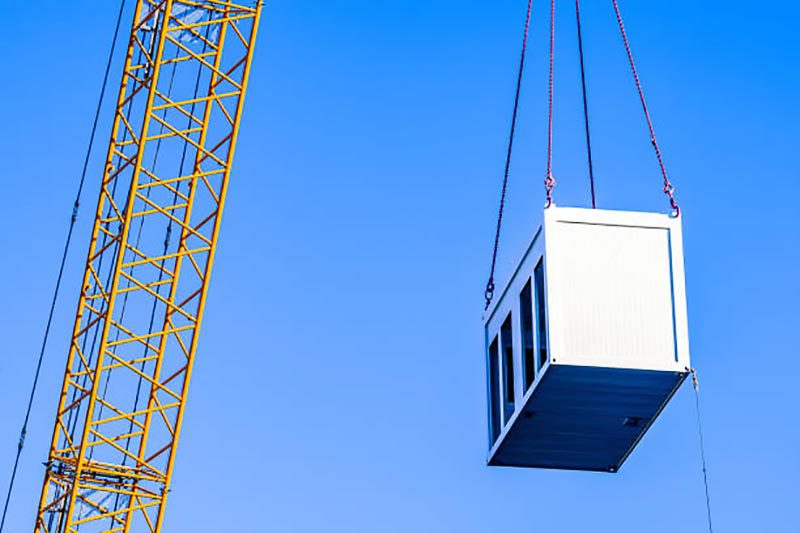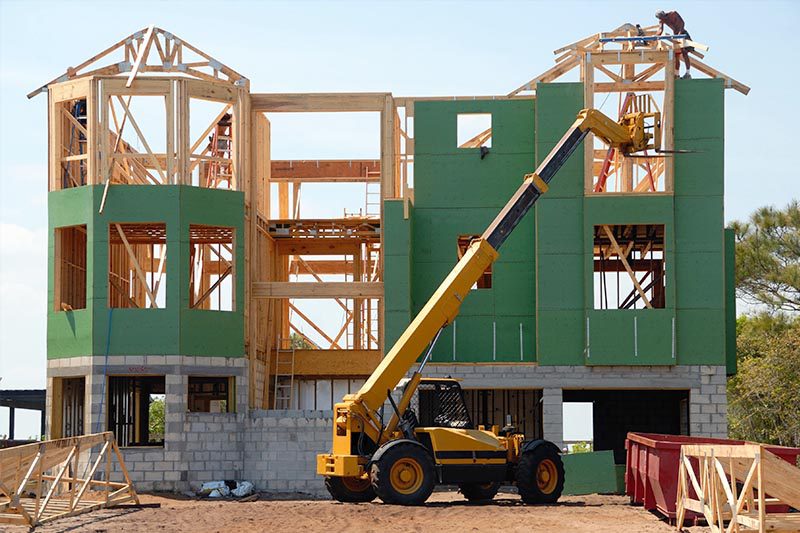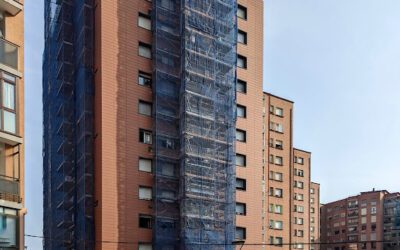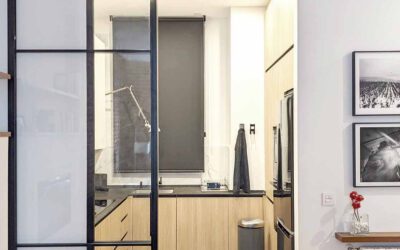Traditional vs. prefabricated house: Which one to choose?


Many customers ask us about the possibility of buying a prefabricated house and installing it on the plot instead of building it in the "conventional or traditional" way.
In recent years, prefabricated houses have gained popularity as an alternative to traditional houses. This is due to a number of factors such as price and construction time. The questions we are most often asked are the following:
- Is it cheaper to prefabricate a house?
- Are construction times shorter?
- Are the procedures to apply for a building permit the same as for a conventional house?
In this article, we will analyse the pros and cons of each option to help you make the best decision.
🏡 Traditional houses
Traditional or conventional houses are those that are built "in situ", i.e. the work is carried out on the plot itself. It is true that there is a certain degree of prefabrication in all traditional building work (carpentry, factory concrete...) and it is increasing, but most of the construction process takes place on the plot.
Advantages of traditional houses:
✅ Greater variety of designs and finishes: Traditional houses can be built with a wide variety of materials and techniques, allowing you to create a unique and personalised house.
✅ Improved functionality and versatility: Traditional houses are better adapted to the specific conditions of the plot, such as urban planning regulations, geometry, choice of materials, orientation, etc. This is because they are built "in situ", which makes it possible to adapt the house to the specific needs of the site.
✅ Increased resale value: Traditional houses tend to have a higher resale value than prefabricated houses. This is because they are more popular and in demand, and also because they are considered higher quality and more durable.
✅ Possibility of personalising the house to your own taste: Traditional houses can be customised to suit the needs and preferences of the owner.
🏗️ Prefabricated houses
Prefabricated houses are those that are built in a factory and transported to the plot for installation. They are usually modular constructions made of lightweight materials such as wood sandwich panels or aluminium profiles.
Advantages of prefabricated houses:
✅ Faster and simpler construction: Prefabricated houses are built in a factory, where conditions and construction processes can be controlled. This reduces construction time and costs (in theory).
Energy efficiency: Today, most prefabricated houses have an A energy rating, the highest energy rating. This translates into significant long-term savings in energy costs, such as heating, air conditioning, etc.
✅ Standardisation: You can choose a house from the catalogue and get an idea of the price.
💸 Price
Which is cheaper, a prefabricated house or a traditional house? It is true that the factory control of a prefabricated house makes the construction costs more controlled, but in no case do they have to be cheaper. In fact, many prefabricated modular house construction companies offer "high standing" houses, since it does not compensate them to prefabricate houses of lower ranges.
Many websites claim that prefabricated houses are cheaper because they omit some parts of the building work. In addition, most of these websites are usually owned by prefabricated or modular home companies.
It can be said that, all other things being equal, a simple box-shaped, fully modulated house is likely to be cheaper if it is prefabricated. But there are many factors that should be studied in detail in the project, and that can increase its price making it more expensive than a traditional house.
⏳ Time
One of the great advantages of prefabricated or modular houses is the construction time. In most cases a prefabricated house is quicker to build than a conventional house.
Construction times improve when it comes to a fully standardised catalogue house. On the other hand, modular houses that are custom-designed for the plot have construction times that are closer to those of traditional houses.
🎯 Functionality and versatility
In the field of functionality and versatility, traditional houses are the clear winners. The vast majority of plots (if not all) require a high degree of customisation: urban planning regulations, geometry, choice of materials, orientation, etc.
These parameters are much easier to absorb in a conventionally built house. Catalogue houses, in many cases, do not adapt well to these factors on the plot.
📜 Regulations
A prefabricated house, is it movable or immovable property?. The Spanish Civil Code distinguishes between immovable and movable goods according to their capacity to be moved. Immovable goods are those that cannot be moved without suffering deterioration or damage, while movable goods can be moved from one point to another.
Prefabricated housing can be considered immovable or movable depending on its carrying capacity. If the housing needs to be anchored to the ground and connected to water and energy services, it is considered immovable property.
Prefabricated housing can be considered immovable or movable depending on its carrying capacity. If the dwelling needs to be anchored to the ground and connected to water and energy services, it is considered immovable property. In this case, it will be subject to the Ley de Ordenación de Edificios (LOE) and the Código Técnico de Edificación (CTE), which require licences and permits for its construction.
If the property can be transported, it is considered movable property. In this case, the formalities are less strict and the documentation required will be that related to the location of the property, as required by the relevant town hall.
Conclusions
The choice between a traditional or a prefabricated house is a decision that depends on several factors, such as budget, time, design and versatility.
If you are looking for a house with a unique and customised design, a traditional house may be the best option for you. However, if you are looking for a catalogue house that is cheaper and quicker to build, a prefabricated house may be a good alternative, as long as it complies with urban planning regulations.
The boom in prefabricated houses is leading to more companies and more competition, thus developing the construction process. The current labour shortage in construction is another factor that makes prefabricated housing an attractive solution.
Despite the great progress of prefabricated houses, they still have a long way to go. In most cases it is more convenient to build a conventional house for the reasons mentioned above. What do you think?
Thinking of building your own house?
The process of building a house is, in most cases, the biggest investment a person makes in his or her life. That is why the advice of an architect is essential, whether the house is prefabricated or traditionally built. At Nistal Architects we have been designing and building single-family homes in Bilbao, the Basque Country and the rest of Spain for more than 35 years. If you have any queries, please do not hesitate to contact us.
Cuéntanos en qué podemos ayudarte
Aid for housing renovation in the Basque Country
Find out how to access the grants offered by the Basque Government for the renovation of residential buildings in the Basque Country.
How much does it cost to refurbish a flat in Bilbao? Guide with prices/m²
Refurbishing a flat in Bilbao is an excellent way to improve its functionality, energy efficiency and market value. In this detailed guide, we analyse prices per square metre according to the type of refurbishment, materials and other key factors that influence the final budget.


